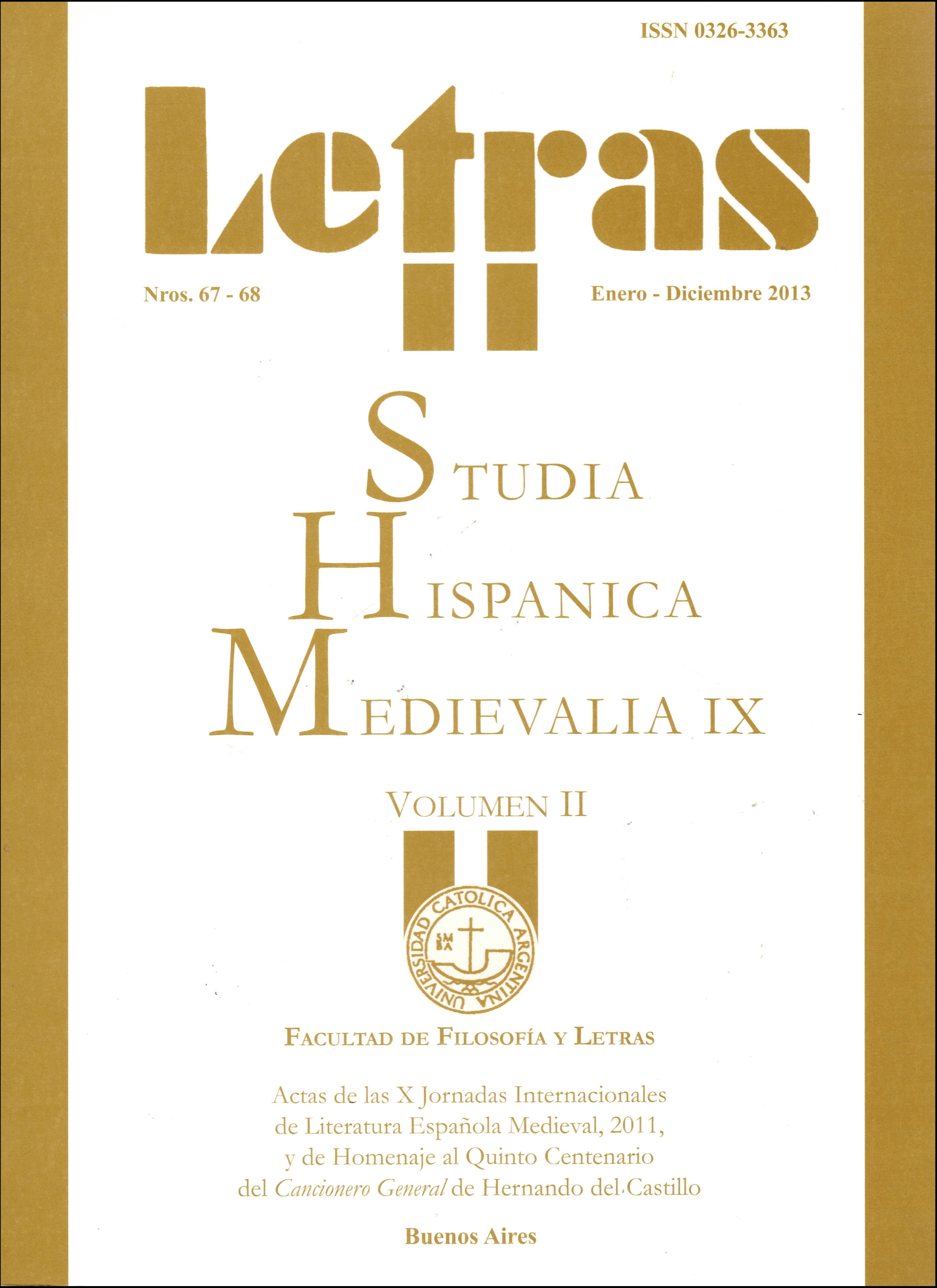El cuento de la doncella sin manos : versiones hispánicas medievales y la tradición oral en América
Palabras clave:
Cuento tradicional, Doncella sin manos, Tradición oral, Literatura medievalResumen
A partir de la primera versión literaria en lengua vernácula del “Cuento de la doncella sin manos”, escrita por Philippe de Remi en el siglo XIII, la literatura medieval no dejó de reelaborar el relato a lo largo y a lo ancho del Occidente europeo. Del periodo que abarca desde el siglo XIII hasta el XVII nos llegan, por lo menos, unas treinta y cuatro versiones escritas solo en los ámbitos románico y germánico. Existe asimismo una tradición arábiga del cuento, probablemente de origen semítico, que constituiría, según algunos autores, una rama narrativa independiente. En la tradición oral el relato ha pervivido hasta nuestros días, en diversos países del mundo, incluida América del Sur, particularmente Brasil, Chile y la Argentina. El legado folclórico en Europa, inicialmente recopilado y puesto por escrito por los hermanos Grimm en 1812, presenta, ciertamente, numerosos puntos de contacto con las versiones americanas. Sin embargo, se ha establecido un vínculo aún más estrecho entre estas y los Cuentos populares españoles recogidos por Aurelio Espinosa en 1923, por un lado, así como también con una de las tres versiones provenientes del ámbito árabe. Luego de trazar un panorama histórico del corpus y estudiar los puntos de contacto entre la tradición europea y la americana, nos centraremos en el análisis de las versiones sudamericanas, particularmente las recogidas en la ArgentinaDescargas
Descargas
Publicado
23-04-2019
Cómo citar
Basarte, A. (2019). El cuento de la doncella sin manos : versiones hispánicas medievales y la tradición oral en América. Letras, (67-68), 27–38. Recuperado a partir de http://200.16.86.39/index.php/LET/article/view/1790
Número
Sección
Ponencias
Licencia












